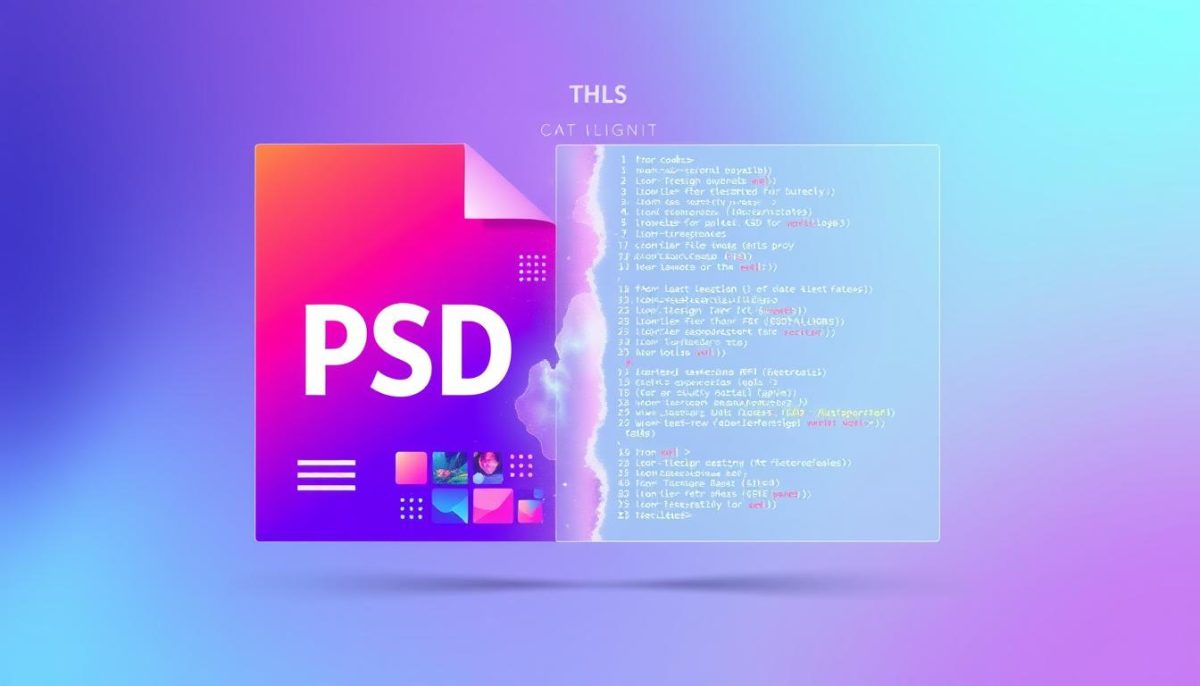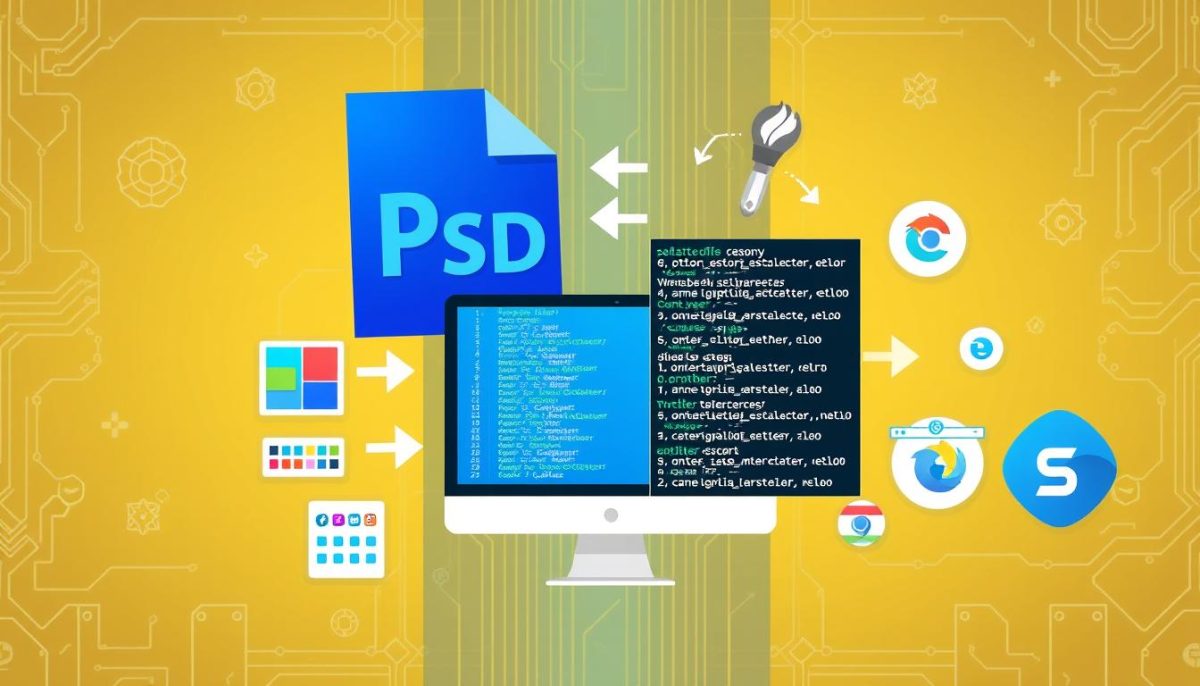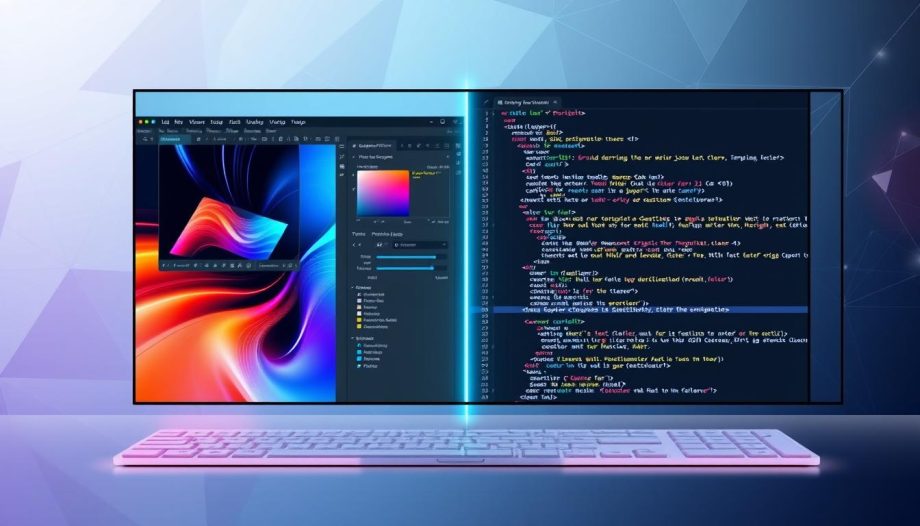Welcome to our comprehensive HTML conversion tutorial on how to convert PSD to HTML. In today’s digital landscape, understanding this process is essential for web designers and front-end developers alike. By converting PSD files, we can transform static visual designs into interactive and responsive web pages, all while preserving the original design intent.
This PSD to HTML guide will set the foundation for greater exploration of both file formats, highlighting their significance in our work. Join us as we delve deeper into the technical aspects and best practices of this vital conversion process.
Understanding the Basics of PSD and HTML
In this section, we delve into the fundamental concepts of PSD files and HTML, two essential components in the realm of web design and development. Understanding the differences and connections between these two formats is crucial for anyone looking to enhance their skills in web development basics.
What is a PSD File?
A PSD (Photoshop Document) file is a layered image file created in Adobe Photoshop. This type of file allows designers to work with images, graphics, and text in a non-destructive manner, enabling the flexibility needed for intricate web designs. The PSD file definition emphasizes its importance in maintaining the original quality and structure of designs, making it easier for designers to manipulate elements individually. These features make PSD files invaluable in the creative process of web development.
What is HTML?
HTML, which stands for Hypertext Markup Language, serves as the backbone of web content. It allows developers to create structured web pages by using a system of tags and attributes. Understanding the HTML definition is critical, as it provides the framework through which visual designs, such as those created in PSD format, are translated into functional, interactive websites. It is essential for turning static designs into dynamic user experiences.
The Importance of Conversion
Converting PSD to HTML holds significant value in web design. The PSD to HTML importance cannot be overstated, as this transformation breathes life into the initial design concept. It enables designers to offer websites that are not only visually stunning but also capable of functioning effectively across various platforms. By mastering this conversion process, we enhance our ability to bridge the gap between design and functionality, leading to more engaging web experiences.

How to Convert PSD into HTML
Converting PSD files into HTML can seem daunting, but with a structured approach, we can navigate this process seamlessly. Let’s walk through the essential PSD to HTML conversion steps, explore recommended tools for PSD to HTML, and identify common challenges along with their solutions.
Step-by-Step Guide to Conversion
To achieve a successful conversion, we can follow these steps:
- Slicing the PSD: Using Adobe Photoshop, we begin by slicing the PSD into separate image assets to use in the HTML.
- Setting up the project: Create a new project folder containing an HTML file and a CSS file for styles.
- Writing HTML code: Start coding the layout using clean and semantic HTML. Each section should be logically organized for ease of maintenance.
- Styling with CSS: Apply styles to the HTML elements with CSS, ensuring to maintain the original design’s integrity.
- Implementing responsive design: Use media queries in CSS to ensure the layout looks great on all devices.
Tools and Software We Recommend
Utilizing the right tools can make the conversion process smoother. Here are some recommended tools for PSD to HTML:
- Adobe Photoshop: Ideal for slicing PSD files into usable assets.
- Sublime Text: A powerful text editor that supports HTML syntax highlighting and is perfect for coding.
- Visual Studio Code: A versatile coding environment with extensive extensions for HTML and CSS support.
Common Challenges and Solutions
While navigating the PSD conversion process, we may face several challenges. Below are some common challenges and effective solutions:
| Challenge | Solution |
|---|---|
| Maintaining Design Integrity | Carefully slice images and use CSS to replicate the visual elements accurately. |
| Optimizing Images | Use image compression tools to reduce file size without sacrificing quality. |
| Dealing with Scripts | Incorporate scripts separately and ensure they are well-documented for future updates. |

Best Practices for Optimizing Your HTML
Once we’ve successfully converted our PSD files into HTML, it’s crucial to focus on optimization. Implementing HTML optimization techniques can significantly enhance our website’s performance and user experience. To start, we should prioritize clean, semantic coding that not only provides structure but also improves accessibility for all users. Adopting best practices for HTML coding ensures that our content is both effective and clear, which is vital in today’s digital landscape.
Another critical aspect of our optimization journey involves minifying CSS and JavaScript files. By reducing file sizes, we can decrease loading times, making our websites faster and more efficient. Additionally, optimizing images is a must; tools like ImageOptim or TinyPNG can help us compress images without sacrificing quality, contributing to a more seamless experience across devices.
We must also ensure that our designs are responsive. Responsive web design not only enhances usability on various screen sizes but also plays a significant role in SEO-friendly HTML. By ensuring our webpages are mobile-friendly, we improve our chances of ranking higher in search engine results, directly impacting our visibility online. As we implement these strategies, it’s important to continuously evaluate and adjust our code, ensuring we maintain the best standards for our projects.

